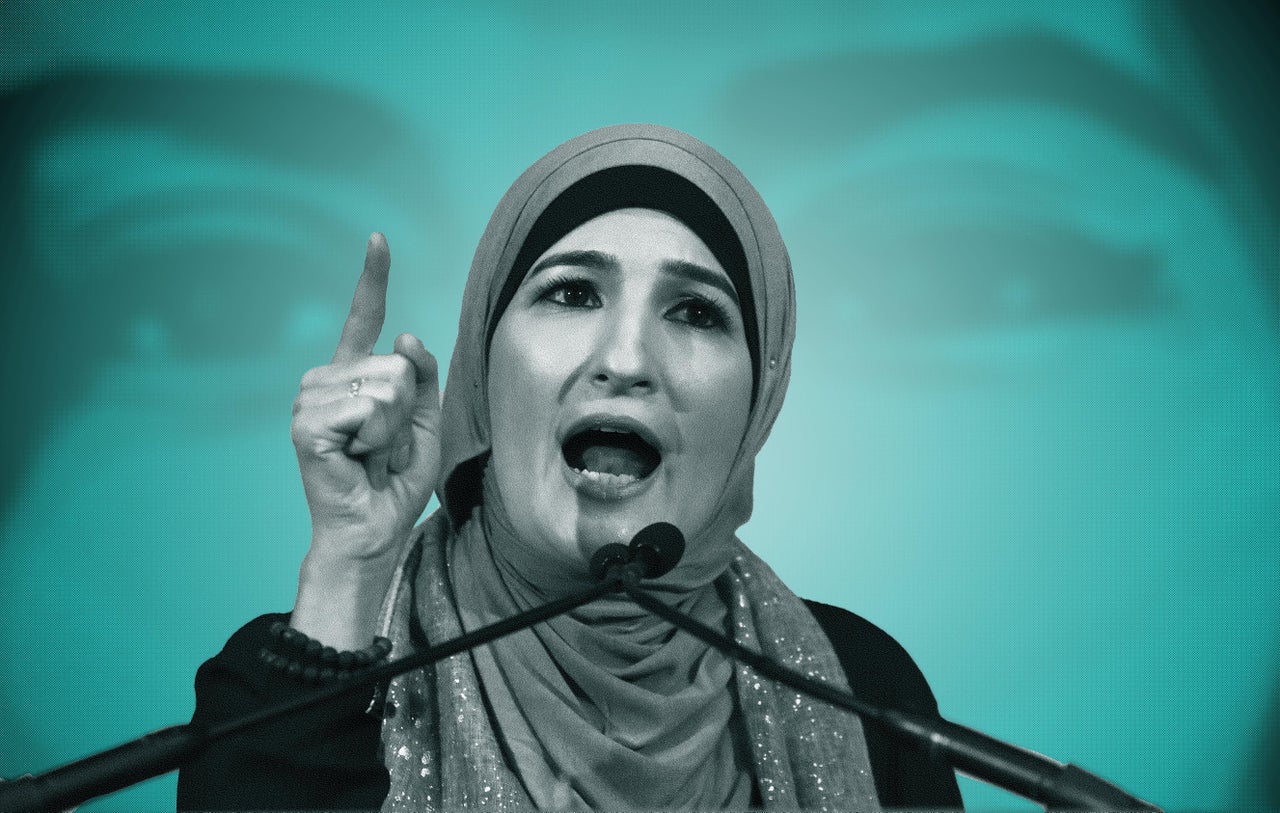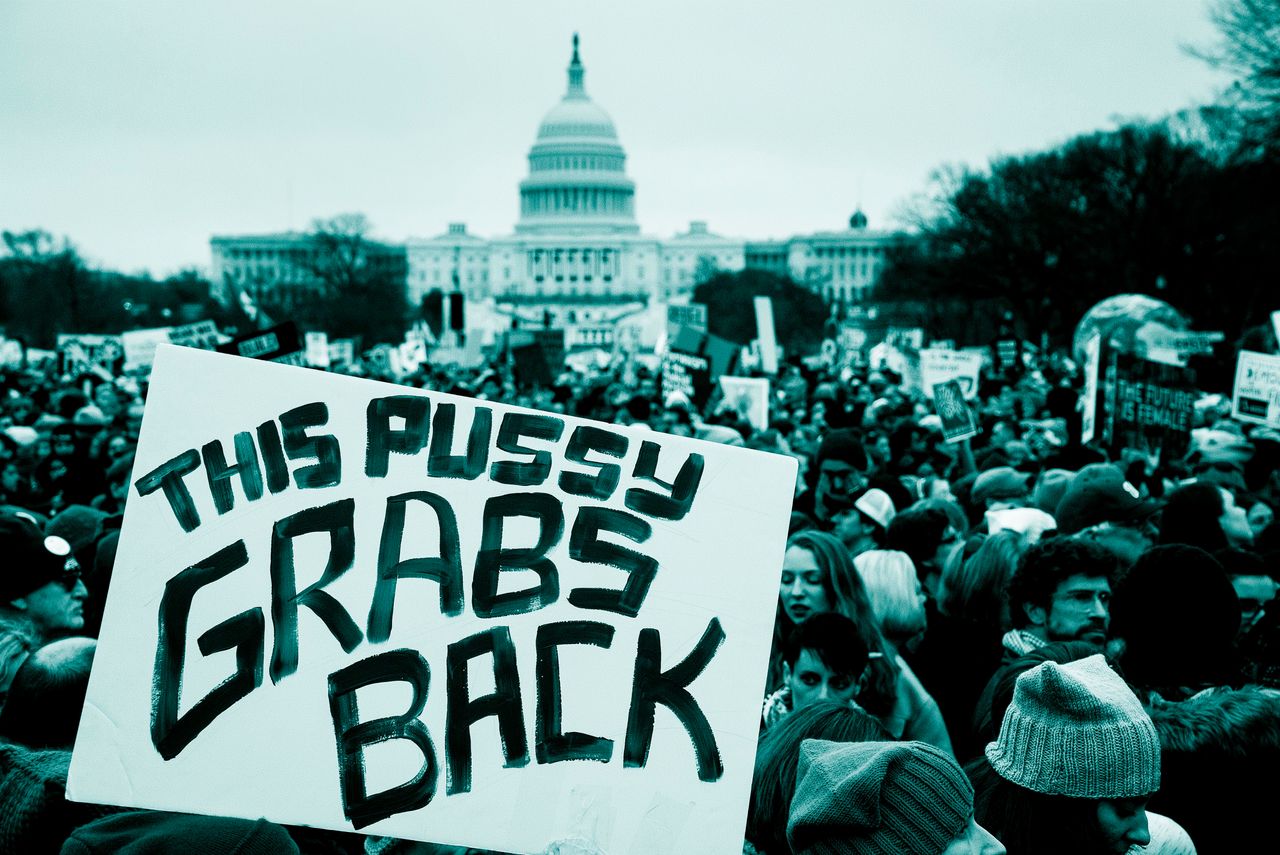Four years ago, on Jan. 21, 2017, nearly half a million people showed up for the Women’s March in Washington, D.C., and millions more joined around the world to protest the kinds of unjust and racist policies expected from the newly inaugurated President Donald Trump.
It was a day of anger, but also unity and joy. Parents brought their kids, women sported pink pussy hats, and people carried homemade signs with statements like “A woman’s place is in the revolution!” and “Make America gay again.”
It was also a day of dire warnings. Women warned that Trump’s racist, misogynistic and violent rhetoric would have real consequences. In the years after, those fears were borne out in his policies and practices.
Nearly four years later, on Jan. 6 of this year, a mob of Trump’s most fervent supporters ― incited by the then-president himself ― violently stormed the U.S. Capitol to try to stop Congress from certifying President-elect Joe Biden’s victory.
Trump’s presidency was thus bookended by two very different groups registering their reactions to losing an election. To Women’s March organizers, the end came as no surprise.
“Women said this would happen,” noted Rachel O’Leary Carmona, the executive director of the Women’s March. “This is exactly who we knew Trump to be. This is exactly who we said he was. And this is exactly why we got him out of office. Because this attempted coup is just the beginning of what he could have done if he got another four years.”
On the four-year anniversary of that first protest, HuffPost spoke to Linda Sarsour, an original organizer and co-chair of the Women’s March. (She is no longer affiliated with the group. Sarsour and two other original co-chairs stepped down from their positions at the organization in 2019 after reported in-fighting and accusations of anti-Semitism.)

Looking back at that day four years ago and the organizing that happened around that first historic Women’s March, how do you feel now?
I feel proud. The Women’s March was a warning to the country that we were going to mobilize in large numbers to hold this administration accountable. We reached women across the country, including a majority of women who never ever marched or organized a day in their lives, and we were able to articulate a message that our liberation is bound up with one another. A white woman won’t be free if Black women and Muslim women and refugee women are not free. It was a very powerful message.
It was fascinating to see the comparison of the beginning of Trump’s presidency to the end, the crazy contrast of people registering their reactions to losing an election. One, the Women’s March, was peaceful and joyous, while the other was a violent insurrection.
The difference between us and insurrectionists is that our march stood for something. It wasn’t just a march against Donald Trump. It was a march for racial justice and gender justice and climate justice. We gave people something to aspire for.
How do you reflect on that contrast?
Outside of the Women’s Marches, I reflect on the direct action that was led by women over the last four years. I remember in 2018, during the zero-tolerance policy of separating children from their mothers and fathers, we organized the largest women-led civil disobedience in history. And the Capitol Police figured out how to arrest over 640 women that day who were engaged in non-violent direct action inside of the Senate Hart building in the atrium.
As a Women’s March leader, I remember during the [Brett] Kavanaugh hearing I was the first protester in that Senate chamber, and all I did was get up and say, “This is a travesty of justice. This is a mockery of justice.” That’s all I did. And I was dragged over chairs and arrested brutally by the Capitol Police for doing nothing more than standing up and using my voice. I did not engage in violence. I did not have any weapons. I was an unarmed woman just saying that I was outraged at what was happening before my eyes, and I was brutalized by the Capitol Police.
“We were able to articulate a message that our liberation is bound up with one another. A white woman won’t be free if Black women and Muslim women and refugee women are not free.”
- Linda Sarsour
So, for me, when I watched insurrectionists and white supremacists storm the Capitol ― people who had announced days in advance that they were coming to the Capitol ― and to see that they were treated with kid gloves really shows you everything we were trying to expose in the last four years under this administration. Law enforcement is not here to protect everyone the same and not everyone will be held accountable the same. And I’ve experienced that. I’ve been arrested over 20 times on Capitol Hill grounds, inside the Capitol and outside the Capitol. So to watch people just walk right in, break windows, steal mail from federal government officials ― it was a very triggering but eye-opening experience for the rest of the country.
How do you think the women who marched in 2017 can channel that energy into four years of a Biden presidency? A president they likely see far more common ground with, but still need to demand big change from.
What is powerful now, four years later and in my experience organizing for the last 20 years, is that now we see intersectionality in a way that we have never seen before. We’ve seen racial justice movements working with climate justice movements working with gender justice movements in ways that are really unprecedented. I believe that the Women’s March ― and our contribution as women-of-color leaders in the Women’s March ― forced our movement to understand that we cannot win this in silos. We cannot defeat Donald Trump or his policies in silos. Once Donald Trump goes after one of us, he’s gonna go after all of us ― and that’s, in fact, exactly what he did. So I think in the next four years, under the Biden administration, you will see a lot more intersectional power building across movements and across communities.
I just came from Georgia. I lived there for a month during the Senate runoff and I saw some of the most remarkable organizing. That, for me, is a reflection of what is possible over the next four years ― to push this administration to do the right thing. If you see even some of the policies that Biden has already proposed and some of the first-day executive orders, one of them is repealing the Muslim ban. That was a big campaign that came out of our movement.
So I feel proud. I hope that women, particularly those who were never really organizers and started becoming active in the last four years, I hope that they see the fruits of their labor. I hope that Black and brown organizers who have been organizing for decades see the fruits of their labor. That’s what I’m excited about.
This interview has been edited for length and clarity.
